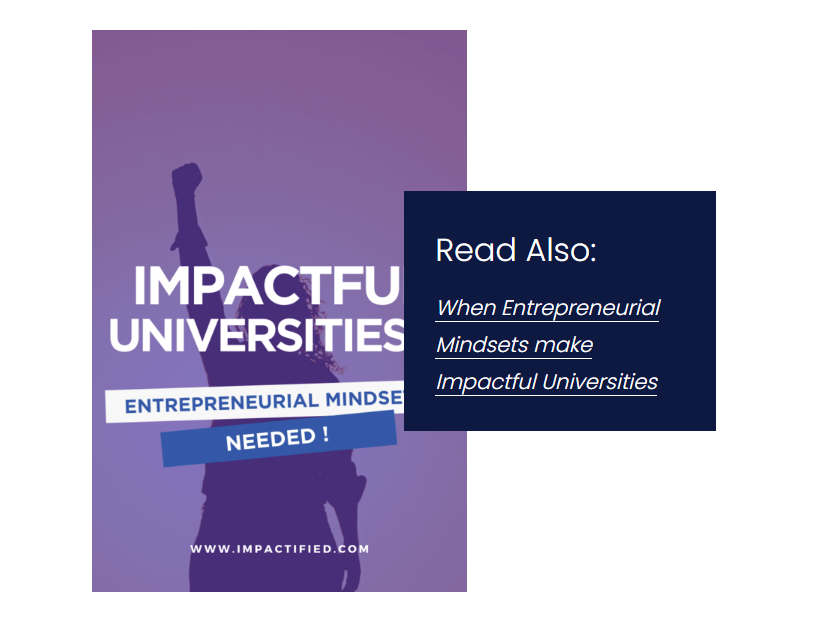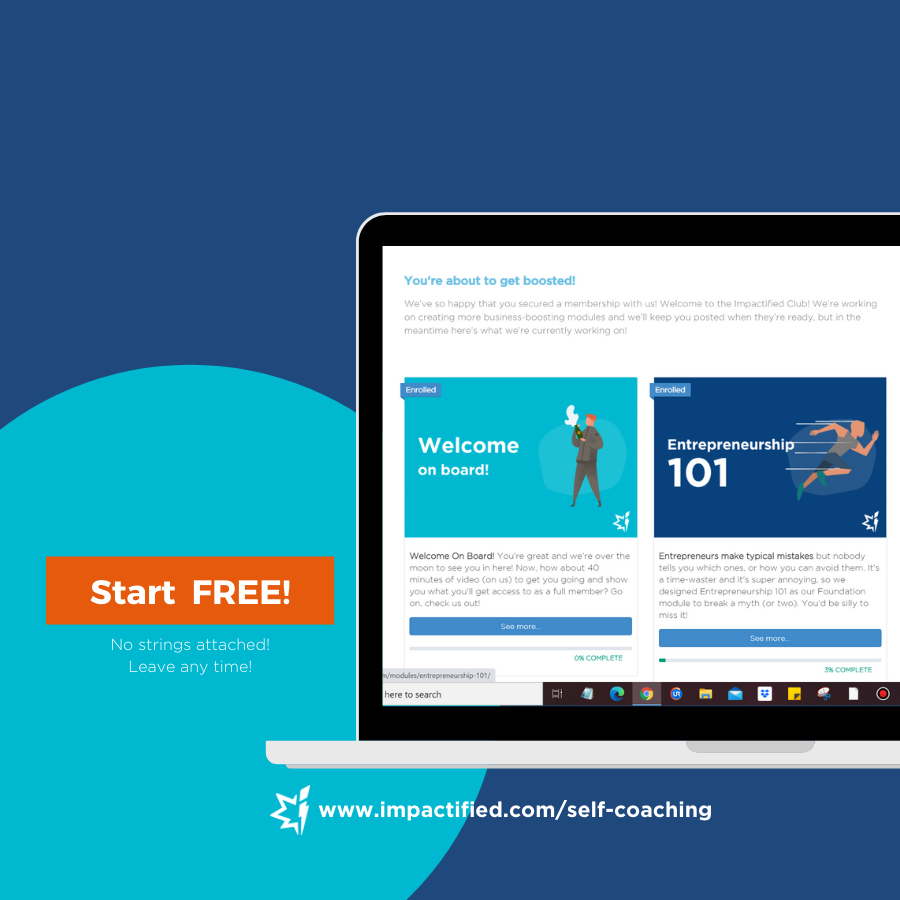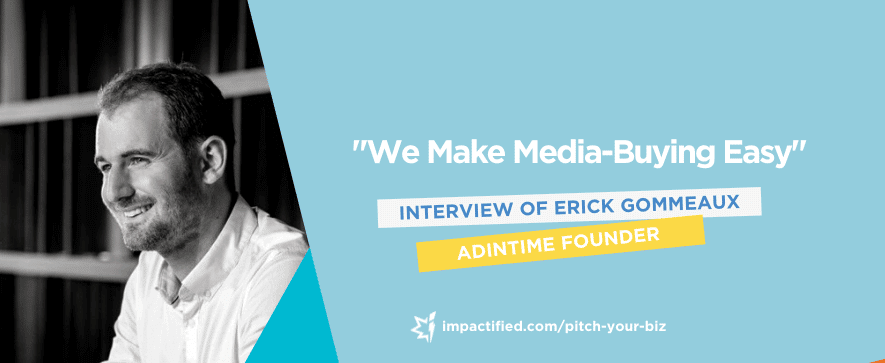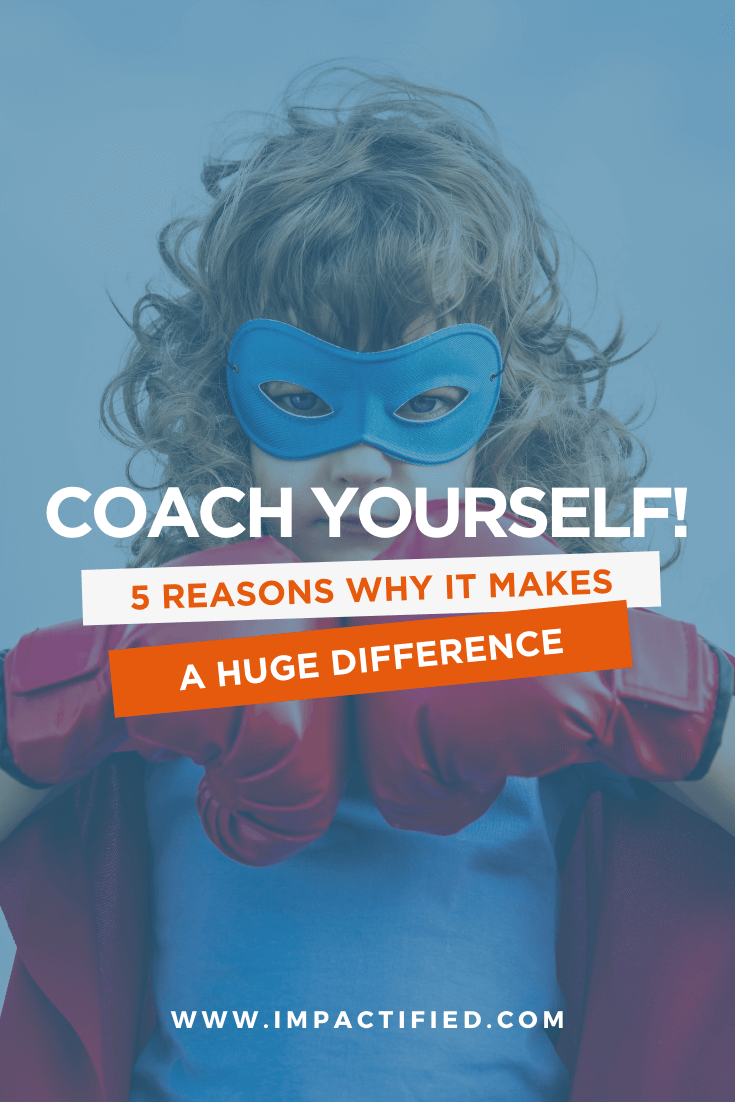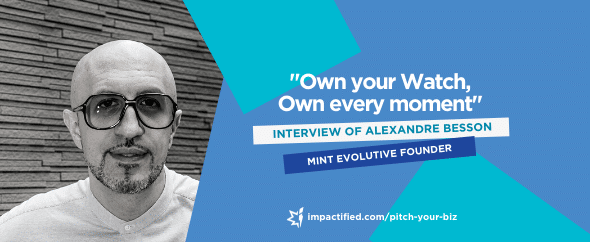Profit, non-profit, universities… believe it or not but ‘Impact’ is a trendy word these days. Social entrepreneurs use it to tell the world that entrepreneurship is not just a matter of building profit and making cash, for starters. Beyond business, non-profit institutions have also begun to see Impact as a way to demonstrate their worth to society. Outside of the usual ways, that is.
The difficulty is to put into place a program to deliver that Impact everybody talks about. And this, in our experience, is the most complicated part of the exercise.
In this article, I am building on my unique experience as a former Head of Academic Impact to formulate some ideas and food for thought on what Impact Thinking is, on why non-profit organizations – especially universities – should seriously consider putting Impact strategies into place, and on how to develop an Impact strategy within a non-profit institution.
Impact is becoming a trendy word.
Profit, non-profit, universities… believe it or not but ‘Impact’ is a trendy word these days. Social entrepreneurs use it to tell the world that entrepreneurship is not just a matter of building profit and making cash, for starters. Beyond business, institutions have also begun to see Impact as a way to demonstrate their worth to society. Outside of the usual ways, that is.
To non-profit organizations, Impact is a matter of demonstrating that the money they raise is put to proper use and makes a difference, for real. Some will showcase their ability to save the planet. Others will focus on animal life, poverty alleviation, so forth, and so on.
In the case of universities and education institutions more generally, the notion of Impact is slightly different. The point is not necessarily a matter of alleviating pain and suffering, but the Impact dynamic nonetheless relates to the idea of making a difference of some sort. To society and to the world. Outside of academia and of the usual publication circles, that is.
In both cases, talking about Impact becomes a major way to showcase expertise as well as a new form of leadership. In both cases, indeed, Impact development becomes a way to build authority and, by the same token, to raise highly needed funding.
The difficulty, it goes without saying, is therefore to put into place a program to deliver that Impact everybody talks about. And this, in our experience, is the most complicated part of the exercise. Why? Because in many cases blaming the status quo and the existing rules is much easier than pushing the lines, hence institutions persevere in old ways characterized by a regrettable lack of ambition and which invariably lead to very little result.
In this article, we therefore build on our unique experience as academic Impact advisers to formulate some ideas and food for thought on what Impact Thinking is (more on the topic of Impact Thinking here), on why non-profit organizations – especially universities – should seriously consider putting Impact strategies into place, and on how to develop an Impact strategy within a non-profit institution.
A gentle warning, before we begin: this article was not written for those who, way too often, hide behind excuses and refuse to change. If you believe that Impact is merely a matter of ticking boxes or, worst, that you don’t need to try and do better than you already do, please don’t waste your time and forward this article to someone who will…
Food for thought on Impact Thinking: what is this about?
Before we explore the question of ‘why’ and ‘how’ you can build an Impact strategy that makes sense and yields results, let us elaborate a little bit on ‘what’ Impact Thinking is about.
Long things short? We, at Impactified, believe very deeply that Impact should be a starting point for all those who have an entrepreneurial mind out there. Really…
Entrepreneurial mindsets. Really.
Let us be very clear, here. Having an entrepreneurial state of mind is not just something for those out there who run a business and want to make some cash. No.
Having an entrepreneurial mindset is all about wanting to make a difference for others. The famous economist Joseph Schumpeter wrote it eighty years ago: entrepreneurs are those members of the society who are willing to take risks to improve a situation and/or solve a problem. They break the status quo in a creative manner (‘creative destruction’ in the text) with the hope of making a difference on a targeted clientele, and they obtain benefits in return.
In a capitalist world, Schumpeter said, this risk is generally rewarded by financial compensation, for sure, yet the point is that such compensation only ends in one’s pocket if a difference was made down the road for someone. If no value is created, no compensation can be paid.
Said differently? What matters is the Impact more than the compensation as without the former there can be no latter. As a result, having an entrepreneurial mindset is, first of all, a matter of spotting a problem that genuinely bothers someone – a type of person, a community, so forth and so on. Once such a problem is identified, having an entrepreneurial mindset is then about identifying a possible solution and about putting the appropriate efforts and energy towards solving that situation.
Said differently again? Entrepreneurial minds are problem-solvers who depend on their ability to make an Impact and a difference that ultimately makes them prosper.
There are more entrepreneurial minds out there than we think.
The interesting thing is that there are more entrepreneurial minds out there than we think, however.
Take social entrepreneurs, for instance. Social entrepreneurs often attempt to differentiate themselves from the usual lot, because they have a grand vision in mind and sincerely believe that a more social approach to business (beyond profit) is needed. Yet, as Eric Ries noted with a great dose of defiance in The Lean Startup, social enterprises depend on cashflows and business models too…
Without a proper business model, decent cashflow and a form of profit originating from an actual Impact on a client or beneficiary which permits ulterior investment in people and means, social enterprises can’t survive – let alone prosper.
Of course, external funding originating from philanthropy can help, but even there the point is to justify that a difference is made and that a problem is solved. Whatever the angle, what matters is the entrepreneurial mindset!
Impact is for non-profits and universities too…
It goes without saying, but the same logic also applies to non-profits, whether that’s charities or, in today’s article, universities.
At the core of a non-profit organization, obviously, is a determination to make a difference and Impact. The recipe is very straightforward: to begin with, problem-solving is the root. Next comes one’s ability to develop a solution. And, once again, money derives from, a) a belief that action will change the world and b) proof that resources actually produce a positive result.
Universities are impacted – pun intended – by this dynamic the same way as other non-profits, except that in their case the difference can be tenfold. First, education changes the world so the Impact potential is massive. Second, and that’s probably the important point here, research has colossal potential. Researchers not only produce new discoveries and ideas, but they also deliver in terms of technology development, in terms of social analysis, in terms of legal and policy change, so forth and so on.
Said differently, if many non-profit organizations can act on precise topics, universities have a unique ability – and therefore responsibility – to act on a broad spectrum of issues since one unique institution can touch upon a large span of issues. And that’s kind of good for reputation, isn’t it?
And Impact Thinking, then?
This leads us to the idea of Impact Thinking, which we at Impactified define (and routinely describe) as one’s ability to build projects around the Impact they want to have in the end.
Believe it or not, but reverse engineering (i.e. building a process based on what we aim to obtain as a product or final solution) is not used that commonly out there.
As far as entrepreneurs are concerned, the priority is often on the daily routines and tasks instead of being on strategic thinking.
Shit needs to get done, to borrow one of our clients’ expression, and non-urgent things (such as process and strategy building) come last when there is nothing else urgent to do.
Suffice it to say that these things never come, yet they remain extremely important. If an enterprise does not have an end target in mind, how can it move forward in the right direction?
The game ought to be more straightforward for social entrepreneurs because the purpose is usually clearer. People know what they want to achieve, so one would normally think that the directions are set and that the strategy is solid as a rock. Right?
In our experience, however, many social enterprises are startups. And startups like most entrepreneurs go with the flow. The wanted Impact is there, for sure, but the roadmap is not defined so at to reach that Impact.
In many charities, similarly, hard-working team members spend countless energy pushing projects. Yet the process towards Impact is not robustly set and the results can take longer to appear.
In universities, last but not least, research gets conducted at very high levels but more often than not, general directions lack while personal strategies are largely missing.
Again, researchers go with the flow, without much of an agenda in mind and without any value proposition being defined whatsoever. Which is precisely where Impact Thinking comes in handy.
Impact Thinking: why non-profits (and particularly) universities should bother.
Now that we have drawn a rather pessimistic picture, let us get into the serious part of the discussion: why non-profits and more particularly universities should bother with Impact Thinking.
The answer to this question is simple: Impact Thinking is a matter of preparing and demonstrating leadership – which can in turn lead to more visibility and more money in the bank. Not to mention the ability to make a real difference, of course…
Impact for change and leadership development.
When universities in the UK had to first develop Impact development strategies around 2014, the purpose was clear: public money was becoming rarer, hence the public (funding) authorities demanded that academics prove that the money they received for research purposes actually made a difference.
Unsurprisingly, this way of putting things created a certain amount of stress (as well as bottlenecks) and the research community took the news as a form of defiance. Researchers began to look at what Impact their research had produced, but in many minds, the point was to tick boxes and move on.
The real point, however, was not to defy academics but to push them to think differently. Instead of doing research for mere publication purposes, the Impact policy aimed at turning research into fuel for social change.
If people could be given incentives to think beyond the publication stage, and if they could be incentivized to think in terms of real-life problem-solving, then good things could happen. Typically? If instead of going with the flow researchers started to build research strategies that encompass research but also dissemination and implementation follow-up, chances are that some difference would be made.
Research could lead to solving real problems, but by the same token, researchers could develop a much more significant form of leadership.
Think about it. If researchers stopped thinking about writing to just publish and instead wrote content that talked to policymakers or to end-users in plain English in order to help them turn words into society improvement, wouldn’t society change?
If those with time, brains and ideas were pushed to get those ideas into the hands of people, charities and institutions that have the power to push walls, wouldn’t things move even faster?
The idea is roughly the same at the charity level, as a matter of fact. Yes, charities are meant to change the world. But in many cases, the priority is to manage the urgent. Yet, what if a different type of thinking helped charities to develop their work? Not because something is urgent for tomorrow, but because doing ‘this’ and investing into ‘that’ is necessary to obtain a wanted Impact down the road, at the end of the year but also five years from now?
In both cases, the idea is the same: if non-profits want to make a difference out there, Impact Thinking is one of those things they need to take into consideration, seriously, and now. Because walking ahead without a trajectory in mind only makes little sense. As a matter of fact, it doesn’t make sense at all.
Impact for funding.
Worth noting, Impact Thinking applied in a non-profit, charity and university context can help tremendously from a financial point of view.
As we mentioned earlier, social entrepreneurs, charity leaders, and academics generally share a common trait: they think in terms of problem-solving, and they need funding to make things happen.
In business, funding comes from investment and sales.
In charities, funding comes from donations.
And in universities, funding usually comes from both – their business model is based on student fees (although not in every country) and public funding and grants are usually instrumental in building solid research.
Non-profit, that is, have no real choice but to emphasize the Impact of their work on society, people and the world more generally if they want to convince. But it rarely happens.
It’s time to start talking to others.
Apart from the U.S. where the idea that universities need a business model that speaks for itself is widely admitted, most academics tend to keep talking to academics.
Research grant applications explain why future research will significantly impact literature and the knowledge available to the scientific community. In a technical academic language, that is. But they rarely elaborate on why the project has the potential to change something for someone.
In contrast, our experience with supporting academics suggests that when research proposals i) include a clear Impact description formulated in plain English, ii) provide a clear explanation of how the money will be used and iii) include precise milestones that non-academic readers can understand, then the outcome differs.
In the first semester of 2019 alone, we successfully helped a leading Faculty in Hong Kong secure about USD 1.3 million in funding by following such simple rules. For real!
The lesson is simple: Simplicity works.
Why? Because grants should be about convincing human beings with emotions and feelings. Those who allocate funding don’t care for academic theory.
They care about the social value that can be created (we call this value proposition), and about the efficient allocation of their funds. They care about talking to leaders capable of inspiring others to make an actual difference. And that requires a change of mindset – not to forget adopting a different writing style, of course.
As previously, the same applies to charities. There as well, insisting on the value created and the Impact actually produced makes a real difference. The point is not to pitch the technical part. Not at first anyway. The point is to appeal to your interlocutors’ emotions to make them realize that what to do matters, works and will make a difference for real.
Impact for inspiration and (academic) empowerment.
We talked about how Impact Thinking could help to build leadership, remember? Let us add that leadership development at the institutional level but also at the personal level has the advantage of making people feel empowered.
Here is the thing.
When asking academics what they love about their jobs, the answer is unanimous: doing research has the potential to change the world. When we ask them what kills their mood at work, their answer is also unanimous: the constraints attached to the publication process kills the ‘change the world’ potential.
This is typical, but there is more to it.
When we worked on Impact development with researchers in the past, the “I’m just an academic, good luck” excuse has come up again and again.
The argument is ill-founded, of course, but it just keeps coming up! Some think they can’t make a difference, others think that their role is to publish rather than make a difference. But both views are wrong and Impact Thinking is the best way to prove it.
Real-life ‘research to Impact’ examples?
Real-life examples speak for themselves.
In the UK, some research about organizational theories concluded that a group of churches spread over the world didn’t have any common organization – and led the said entities to work together. Research, applied, impacted a global community.
In Hong Kong, a professor expert in energy law produced a series of rather theoretical books and articles on central Asian regulatory regimes – and ended-up improving the energy legislation (and systems) in two countries. Another professor expert in international trade agreements (the ones people love to attack on TV, you know?) trained the diplomats of a handful of Asian countries, thus improving those countries’ ability to rise and shine on the regional scene (while bringing significant prestige to his university).
There are tons of ways to illustrate this. Think about an expert in constitutional law (a rather in-digest topic for those who don’t know about it) who empowers illiterate women by using drawings and cartoons to explain what rights they have. Imagine, also, a theoretical book on genocides turned into a globally spread photography exhibit to explain to people how the press contributes to propagating hate speeches.
Imagine a law professor who thinks about using algorithms to analyze judicial bias. Sounds theoretical, right? Yes, until the analysis is provided to solicitors and judges to show that, in reality, certain populations are discriminated against and need to be considered differently because the numbers say so.
Oh. And, how about a project on refugee rights which leads to possibly changing the lives of hundreds because, well, better understandings of complex situations actually help to make a difference out there?
Do you need more? Einstein was a brilliant researcher and we can probably say without taking too much risk that he made a difference, so why not follow the lead? Mathematics when applied have an Impact. Political studies have an Impact. Legal studies have an Impact, so forth and so on.
There are tons of valid examples, all you have to do is look and pick.
Impact thinking as an academic game-changer.
Said differently? When an organization brings Impact into its narrative and message, people within the organization have a way to explain in simple terms what their time and efforts produce. More importantly, perhaps, they gain an opportunity to think differently and realize that they can take a new approach to their jobs.
When we ‘coach’ researchers, they start thinking not just in terms of to-do lists and constraining work. They think in terms of why they do research, in terms of what they want to achieve in the long-medium term. And, of course, they get to think of how they are going to get there.
Academics aren’t ‘just’ researchers. They are game-changers and Impact Thinking is the best way to make them realize that.
When Impact Thinking is involved, fundraisers, accountants, lawyers and researchers alike have one message to push: “I make a difference out there”. Ultimately, that turns them into the best ambassadors an institution can dream of whereas, in contrast, discarding Impact to focus on the usual technical bits make people feel powerless and useless.
Quite a difference, don’t you think?
The big question: How can a non-profit build a strategy around Impact Thinking?
So, bringing Impact Thinking into a charity or university environment is key, but a question remains: how can a non-profit build a strategy around the very idea of Impact Thinking?
The question is extremely legit, but in many cases, it leaves the management powerless because there is very little awareness on the topic. Here’s our Impactified take on the issue.
First, an Impact strategy requires a strong message people can relate to. Second, it must actually be focused on people. Third, Impact Thinking requires strategic thinking. Fourth, bringing change requires a highly supportive environment and a robust institutional commitment.
Building Impact requires a strong narrative people can relate to.
The temptation for an organization when it comes to building a strategy is often to decide at the head level and to tell the hands how to proceed. In our experience, however, this cannot be done unless the organization’s head actually has a robust plan to communicate (both internally and externally) and to which people can relate. But that’s not easily the case.
The example of the UK universities mentioned previously is very illustrative – just because you ask people to make a difference on their own doesn’t mean that they will! In fact, many universities over there still struggle with strategy development and many schools lack the guidance needed to put sensible programs into place.
The best way to start? Prepare a unity message.
In real life, a non-profit, a charity or a university has no choice but to surround itself with a positive Impact-focused environment, and that requires crafting an easy-to-remember message which explains what Impact is about.
On the one hand, the basic element of an Impact strategy is to clarify what making an Impact actually means.
For a charity, reducing poverty in general is not enough, but getting seven hundred people off the streets within the next five years is a precise Impact that people can relate to. Internally, staffers can use such a message to fight for something worth their time. Externally, the message is strong and can easily inspire donors and supporters.
For a university, defining Impact would rather consist in empowering every Faculty to define how it can make a better world (institutional approach) but it, more importantly, is a matter of giving researchers incentives to build personal Impact goals and strategies.
Every researcher has a different specialty, right? Then pushing for individual Impact plans is the only thing that makes sense. That’s why we say that more entrepreneurial mindsets are key to make impactful universities!
The point is this one: nobody will move unless they are accompanied. Nobody will try and take more time to build something called ‘Impact’ if the thing is perceived as ‘just more work that’s unpaid and pointless’.
So, institutions must build strong narratives that people can relate to, so that new cultures and mindsets focused on Impact may emerge.
Universities must provide researchers with explanations (for instance that Impact Thinking will help you building more coordinated research in the long-term), and they must ensure that staff understands that there is something to win from Impact in terms of leadership, funding and, ultimately, changing-the-world satisfaction. Not for the institution, for themselves.
Believe us. Building this kind of narrative takes time and everyone won’t be convinced, but those who will see the difference they can make will play the game and benefit from it immensely.
Building Impact requires a focus on people.
To get there, however, institutions must invest in people. The idea is not just to tell people what to do, once again, but to empower them. Nobody will make a difference because they are forced to. People need to be convinced that their effort will be worth something.
The solution here is obvious: investing on people is the only way. In the case of universities, in particular, workshops must be organized to develop awareness – we particularly recommend design thinking, as a matter of fact – and personal academic coaching must be developed, so that those who want to invest their time and energy in developing Impact have a better chance to succeed.
In our experience, academic researchers don’t have a clue but they are precisely like entrepreneurs! They need to convince that their research is worth investing into, and the best way to do that is to help them work on their personal leadership and branding.
What are they trying to achieve? What value proposition can they bring forward when defending a project? What words should they use to not just talk but inspire funders and influencers? How to talk to the press? How to pitch a project? How to write a proposal to touch the reader instead of losing him?
Those questions are usually far from the usual academic narrative, but they are inevitable. All it takes is a decision to ask the right questions, guide, and follow up.
Impact Thinking requires taking a strategic approach to things.
We mentioned previously that Impact Thinking had the power to make people shift from “I’m just a researcher” to “I can make a difference”, remember? To get there, institutions must push their teams to think more strategically.
Impact thinking is a matter of identifying the result you want to achieve, but it is also a matter of i) defining strategic steps and ii) ensuring appropriate allocation of resources, so that everything one does actually gets them closer to their goal.
When asked what Impact they have, universities currently have to start new research. Research spread over the years to explore what they have done, and research to determine what difference they made.
This is nonsense.
On the contrary, thinking with Impact in the first place means that the difference you make is known because it is wanted rather than obtained by luck. Strategic thinking is Impact, and Impact Thinking has become strategic. It is time to let the entrepreneurial minds in your teams try, you will be surprised with the results…
Building Impact requires a robust organizational commitment
The last point (on following-up, if you follow) is extremely important because it leads to the most important factor: commitment.
Impact Thinking is a major change for academics and as such it often creates waves. Some ignore the development, but others actually fight it and do all they can to delay it. In such cases, two things need to be done.
First, resistance originates from fears (to lose autonomy, to have more work to do, so forth and so on) so the importance of building a robust narrative people can understand and relate to is essential.
Second, those who complain tend to make much more noise that those who don’t, hence the institutions that push for an Impact logic must take a stand. They must commit to developing an Impact culture and an Impact mindset, and they must provide reliable support to those who try. Without such support, even those with the greatest motivations will give up, sooner or later…
The bottom line: Impact Thinking, non-profits and universities’ best ally?
The bottom line of this article is this one: Impact Thinking is probably the best ally of non-profit organizations, particularly universities.
Wondering what Impact a university has every five years because the taxpayer requires it makes no sense, but Impact Thinking and its prospective approach does. Staffers have potential beyond expectations, all they need is a push. A push to think differently, a push to think outside the box, a push to plan and organize so that leadership and funding increases.
If you still have a doubt, think about the massive gaps which separate students and their teachers. Once they become employable, students are expected to take an entrepreneurial approach to life. They must find solutions to problems and turn those solutions into something tangible that makes a real difference for others. Sometimes they do it as employees, but more and more they will do it as entrepreneurs.
The whole society (and business) model expects them to think about how to make a difference, so why should teachers be exempt from applying that mindset to themselves?
The world is changing, and universities can’t afford to be the last bastions where people don’t think strategically. ‘Do what I don’t do’ isn’t suitable as a model anymore – we all have a responsibility to do better.
So, where would you like to begin?






